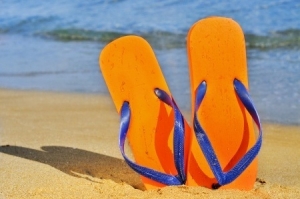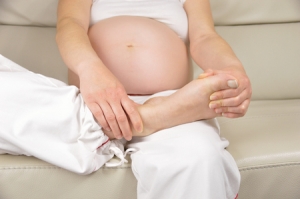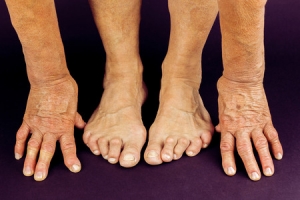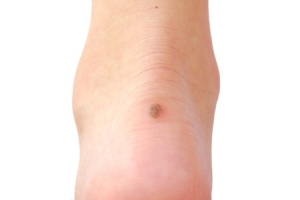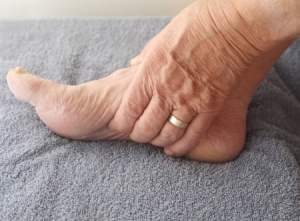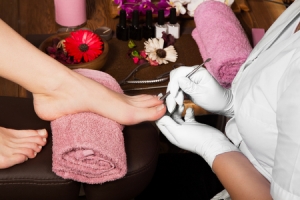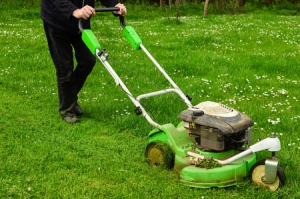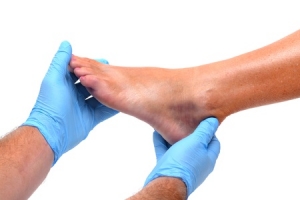Connect With Us
Blogs
June is Older Americans Month
At Superior Foot & Ankle Care Center we know that foot care needs change as you age. This week we’d like to address some foot health care needs that are particularly important for our more senior patients in honor of Older Americans Month.
Work with Your Podiatrist—there are several foot ailments that are more likely to develop as you age, such as arthritis and certain nerve issues. Your feet may also be the first place that systemic disorders such as diabetes or circulatory dysfunction show up. For these reasons, it’s important to maintain a regular schedule of checkups with our podiatrists, Dr. Victoria Foley and Dr. Constance Omelas. This will enable the foot doctor to spot changes in your feet and also help you manage chronic foot issues and keep them from becoming debilitating.
Shoe Sense—good shoes are important at any age but for senior patients, the right shoe can prevent falls and keep foot disorders from worsening. Have your foot professionally measured at a quality shoe store. It is not unusual for your shoe size to increase as you get older. Buy shoes that have good arch and ankle support and a gripping tread on the bottom. Shoes with laces give a better fit than Velcro. For dress shoes, keep heels to no higher than 2 inches. Replace shoes when they become stretched out or damaged.
Develop a Daily Foot Care Regimen—wash your feet every day and dry completely. Check your feet for any changes in skin or nails, cuts, bruises, growths or any other unusual symptoms. Keep toenails trimmed straight across and not too short to avoid ingrown nails. Apply moisturizer or foot powder as needed.
Good Habits for Life—many of the lifestyle choices that are healthy for the rest of your body have a positive impact on your feet too. Don’t smoke—it impedes circulation. Exercise regularly to increase bone strength and maintain range of motion. Keep your weight down because extra pounds put more stress on joints and bones in your lower extremities.
Keeping your feet healthy during your senior years isn’t difficult. To learn more about how to ensure that your feet will enable you to live a long, active life, contact our Long Beach office by calling: (562) 420-9800.
Flip-Flop Fail
They’re so easy to wear—just slip them on and off you go. In flip-flops your feet feel so free, as if there’s hardly anything there and that’s the problem! There isn’t. At Superior Foot & Ankle Care Center we know many of our patients love flip-flops and wear them nearly every day but unfortunately, it’s a shoe choice that can leave your feet vulnerable to injury and result in serious foot problems. Here’s why:
Increased Risk of Injury—let’s start with the obvious: flip-flops provide very little protection for your feet. Since they are so exposed, your toes are not shielded from getting stubbed and cuts can happen when your foot slides off the shoe. In addition, because there are no sides to hold your foot in place, flip-flop wearers are more likely to sprain an ankle.
Toe Stress—think about the motion required to keep flip-flops on. Your toes are constantly gripping the front of the flip-flop. With extended use, the strain to the toes can cause tendonitis and toe deformities such as hammertoe and bunions.
The Fracture Factor—with literally no cushioning, flip-flops offer zero shock absorption as you walk. The repetitive pounding on the bottom of your foot and lack of arch support can result in stress fractures, heel pain and plantar fasciitis. You may also find that you experience pain in your ankles, knees, hip and back because of the altered gait that comes about with prolonged flip-flop use.
Finding a Better Flip-Flop
Due to the popularity of this type of footwear, some manufacturers have begun to make shoes that offer the easy style of flip-flops but with an eye to lessening the damage to your feet. If you are frequent flip-flop wearer, look for the following
- A built-up centerpiece for arch support
- Flip-flops made of leather instead of plastic or vinyl to reduce blisters
- More substance—if you can bend a flip-flop completely in half it does not have enough cushioning or support
- A back strap
If you’ve been wearing flip-flops as your go-to shoes for a long time now and are experiencing pain in your ankle, toes, heel or forefoot, make an appointment at our Long Beach office by calling: (562) 420-9800. Our podiatrists, Dr. Victoria Foley or Dr. Constance Omelas will examine your feet and make specific recommendations about shoe choices that will be the healthiest for your feet.
6 Ways to Make Pregnancy Easier on Your Feet
Being pregnant is a joyous time but here at Superior Foot & Ankle Care Center we often find that patients who are expecting a baby weren’t expecting the foot woes that can go along with this condition. Knowing what to expect and taking a few precautions can increase comfort and decrease the risk of injury. Follow these 6 tips while pregnant and your feet will thank you!
- Change your shoes. As your pregnancy progresses and you gain more weight, the stress on your feet increases as well. You may need larger or wider shoes to accommodate these temporary changes (although some women do find that their feet are permanently a larger size, even after giving birth).
- Avoid tight socks and stockings. These, in conjunction with shoes that are already getting a little snug, can increase the risk of developing an ingrown toenail by constantly squeezing your toes together.
- Ditch the heels. Low, wide heels are the way to go now. Your center of balance will shift as your baby grows and this can throw you off balance, making a fall more likely. Wider heels will increase stability.
- Pay attention to where you are walking. Your body releases a hormone called relaxin when you are pregnant that does just what its name says: it relaxes the ligaments in your body. Not just the ones necessary for giving birth, however, but all the ligaments in your body get looser. For your feet, this means a greater likelihood of twisting your ankle. Watch for changes in pavement height and don’t carry a lot of packages at once so as not to obscure your view of where you are walking,
- Stay hydrated. Swelling and excess fluid are normal during pregnancy and when you’re vertical the fluid tends to pool in your ankles leaving them bloated and sore. Although it sounds counterintuitive, drinking more water will actually help you flush excess fluid from your body.
- Put your feet up! This is always good advice when you are pregnant, but for your feet, elevating them above the level of your heart several times a day will reduce swelling and give them the much-needed rest they need.
If you experience symptoms that you think are not normal in your feet (such as excessive swelling that doesn’t go down or pain in one specific part of your foot) contact our Long Beach office at (562) 420-9800 and allow one of our podiatrists, Dr. Victoria Foley or Dr. Constance Omelas to examine your feet and make sure all is well and that your pregnancy proceeds smoothly.
Busting Arthritis Myths
May is a busy month for health observances but here at Superior Foot & Ankle Center, there’s one more that we can’t let pass by National Arthritis Awareness Month. Why are we so concerned about sharing information about this condition with our patients? With 33 joints in each of your feet, the effects of joint pain, swelling, inflammation and decreased range of motion can spell extreme debilitation if they attack your feet. Many people have some outdated ideas about arthritis, so we’d like to take this opportunity to expose some common myths:
Myth: Arthritis is a joint disease.
Fact: Actually, arthritis is a description of an entire category of more than 100 joint diseases. Besides the two best-known kinds—osteoarthritis and rheumatoid arthritis–many diseases you may be familiar with are considered forms of arthritis. These include chronic fatigue syndrome, gout, Lupus, Lyme disease and fibromyalgia.
Myth: Arthritis is an old person disease.
Fact: Approximately 300,000 babies, children and teens have arthritis. Although scientists are still trying to find out definitive causes of juvenile arthritis it’s thought that genetics and autoimmune diseases play a significant role.
Myth: Exercise is too painful if you have osteoarthritis.
Fact: Although patients with arthritis may worry that exercise will cause more harm to joints, it is the most effective non-drug treatment for improving movement and reducing pain caused by osteoarthritis. There are three types of exercise that are particularly beneficial: aerobic or endurance, flexibility and strengthening. Together these can greatly improve your range of motion and ability to move.
Myth: There’s no correlation between arthritis and the weather.
Fact: Although researchers have been skeptical in the past about the weather/pain connection, studies have confirmed that certain atmospheric changes do increase arthritis pain. Drops in barometric pressure and temperature cause greater joint discomfort. One study at Tufts University found that every 10-degree drop in temperature corresponded with an incremental increase in pain.
Myth: Arthritis is not a diet-related condition.
Fact: There are foods that cause an inflammatory response in the body and other foods that decrease inflammation. In addition, maintaining a healthy weight reduces the strain on the joints, particularly those in your feet and ankles.
To learn more about your risk for arthritis and the steps you can take to prevent it talk to our podiatrists, Dr. Victoria Foley or Dr. Constance Omelas at your next appointment. And if you start to experience any pain, swelling or joint discomfort, contact our Long Beach office as soon as possible by calling: (562) 420-9800.
Questions about Skin Cancer
May is Skin Cancer and Melanoma Awareness Month and we at Superior Foot & Ankle Care want to remind our patients that here in sunny Long Beach, CA we are exposed to the sun’s harmful rays for much of the year. Protecting your skin isn’t just something you need to think about when you’re heading to the beach for the day. Protecting the skin on your feet is just as important as the skin on the rest of your body. Did you know that between 3-15% of all melanomas occur on the feet? The sad fact about foot cancers is that they are often not detected in their earliest stages because patients don’t think to look for them there. Below are some common questions about skin cancer to help raise awareness about this disease:
Isn’t it better to get a base tan before vacation rather than spend more hours in the sun?
Using indoor tanning beds increases the risk of melanoma by 74%, squamous cell cancer by 67% and basal cell cancer by 29%. Tanning beds irradiate your body with ultraviolet radiation which is a carcinogen—whether it comes from the sun or a tanning machine. There is no safe level!
Is using a self-tanner safe?
Yes! And, it’s a great way to get the tan look you love without the danger of skin cancer. Self-tanning has come a long way. For a special occasion, you may want to splurge on a professional spray tan but there are plenty of home products that also produce a natural, even-looking tan. Remember to still apply sunscreen as self-tanners do not provide sun protection.
Do laser treatments cause skin cancer?
There are many different types of laser treatments available today that are used to reverse the effects of sun damage and also to treat wrinkles and fine lines. These do not increase the risk of skin cancer and in fact, can reduce risk by treating pre-cancerous lesions.
What are other good ways to prevent skin cancer on my feet?
Use a broad spectrum, water-resistant sunscreen that protects against both UVA and UVB rays. Reapply every two hours and always after swimming. Avoid being out during the hottest times of the day—10 a.m. – 4 p.m.
Be diligent about checking your feet and the rest of your body for changes in spots or moles. Those that are multi-colored, asymmetrical, larger in diameter than ¼ inch, have irregular borders or have started bleeding, itchy or flaking should be reported to our podiatrists, Dr. Victoria Foley and Dr. Constance Omelas immediately. Make an appointment by calling: (562) 420-9800.
Bone Up on Strategies to Beat Osteoporosis
May is National Osteoporosis Month and at Superior Foot & Ankle Care Center we want to offer 52 reasons—all the bones in your feet–why you should be concerned about this disease. Patients with osteoporosis make too little bone, lose too much bone or both. The end result is weakened bones that are more likely to fracture. Many people are unaware that they even have osteoporosis. In fact, when our podiatrists, Dr. Victoria Foley and Dr. Constance Omelas diagnose a stress fracture in the foot it is often then osteoporosis is discovered.
Know Your Risk
Osteoporosis affects half of all adults over the age of 50. One in four men and one in two women will break a bone in their lifetime as a result of osteoporosis. For women, that incidence is higher than the risk of heart attack, stroke and breast cancer combined! Factors that put you at greater risk include:
- Early menopause
- A family history of osteoporosis or frequent fractures
- Body type—thin, small people are more likely to suffer from osteoporosis
Build Stronger Bones
Fortunately, there are ways you can greatly reduce your risk of osteoporosis and future fractures:
- Start by talking to the foot doctor about your risk, particularly if you have already broken a bone in your foot or ankle. The podiatrist can refer you to testing and medical professionals that can help assess your risk.
- Up your intake of calcium and vitamin D. You can do this by including more dairy products or those fortified with calcium and vitamin D (juices and cereals, for example) in your diet. You can also add more leafy greens and fatty fish, such as salmon and mackerel and other non-dairy foods that are rich in calcium to your meals. Supplements are also available.
- Make exercising regularly a priority. Both weight-bearing and muscle-strengthening exercises should be part of your fitness routine if you want to build and maintain bone strength in your feet, ankles and the rest of your body.
- Don’t smoke or drink alcohol in excess—these are both known to weaken bones and also lead to nutritional deficits which can further decrease bone mass.
Take measures now to ensure that you can keep taking steps and living an active life for many years to come. If you have questions about the health of your foot and ankle bones, contact our Long Beach office by calling: (562) 420-9800.
Beware of the Health Risks Involved with Pedicures
A pedicure at a professional salon is a relaxing treat that leaves nails looking pretty in sandals and open shoes. A fungal nail infection or a case of athlete’s foot, however, is not such a pleasant experience and one that we often see at Superior Foot & Ankle Care Center, as a result of poor sanitary practices at a salon. We want our patients to enjoy this “me time” activity safely. Below are some do’s and don’ts for ensuring you get a pedicure that will not harm your feet.
Do: Check out a salon you are considering for a pedicure before committing to an appointment. Visit first and observe the overall condition of the salon. Reputable salons are licensed and that certification from the state health or cosmetology department should be clearly displayed. Cleanliness should be a priority for the entire establishment. If restrooms are not clean, the floor is unswept, window sills are dusty or the cosmetologists themselves don’t have clean hands and nails, take the hint and go someplace else.
Don’t: use a whirlpool foot bath that has not been sanitized after the client before you. Some salons now have plastic inserts that can be thrown away after each customer.
Do: bring your own pedicure tools—clippers, files etc. Ditto for flip flops which should be worn at all times in the salon. If you do need to use the salon’s tools be sure that they come out of individually wrapped packages or are sanitized properly in a machine or with sanitizing solution.
Don’t: allow the nail technician to use razors to remove calluses or dead skin on your feet. This can create a cut that can lead to an infection.
Don’t: shave your legs right before your pedicure appointment. Better that you have hairy legs and avoid bacteria entering the skin through the tiny cuts caused by shaving.
Do: Make an appointment at our Long Beach office by calling: (562) 420-9800 if you do notice any signs of fungal infection, such as itchy, red patches on the skin of your feet or between your toes or nails that are getting thick, discolored or are starting to peel and crumble around the edges. Infections will not clear up on their own and can spread if left untreated. Our podiatrists, Dr. Victoria Foley and Dr. Constance Omelas will examine your feet and nails and prescribe the correct treatment if an infection has occurred.
Mower Safety Tips
Did you know that each year over 25,000 Americans are injured while using their power mowers? The majority of these injuries occur to the lower extremities, hence our concern here at Superior Foot & Ankle Care Center. It’s easy to get complacent when doing repetitive tasks and we’d like to offer the following safety tips and reminders when mowing your lawn:
- Never mow a lawn that is wet. The number one cause of foot injuries by power mowers is the loss of control of the mower on slippery, wet grass.
- Okay, you wouldn’t think we’d have to say this, but emergency room reports say otherwise: don’t mow your lawn wearing sandals, open-toed shoes or barefoot! Even sneakers do not provide much protection against blades whirling at 3,000 revolutions per minute. Work boots or other heavy shoes are your best bet.
- For lawns that slope, mow crosswise, not up and down.
- Do not take small children for “rides” on the lawn mower or let them sit on your lap when mowing. Many tragic accidents occur when a child tries to get on or off the machine and their feet can’t clear the blades.
- Pick up large sticks and any other debris in your yard before mowing to avoid projectile injuries from objects being kicked up by the mower.
- Don’t pull a running mower backward.
- Make sure you know where your children are when you are mowing and teach them not to try to come out and talk to you when mowing. The noise of the mower will prevent you from knowing they are approaching.
- Use a mower that has an automatic shut off when you release the handle.
Even if you sustain what appears to be a superficial wound from a lawnmower blade it’s essential that you stop and immediately clean the area, apply an antibiotic ointment and cover with a bandage. If you notice any heat or redness around the wound within a few days following the injury or you just are not sure it is healing properly, contact our Long Beach office to make an appointment by calling: (562) 420-9800. Our podiatrists, Dr. Victoria M. Foley or Dr. Constance Ornelas will examine your injured foot and prescribe any additional treatment needed.
Alcohol and Your Feet
April is Alcohol Awareness Month and at Superior Foot & Ankle Care Center we want to share with patients some important information about this disease and how it affects your feet. Of all the addictive substances available in the United States, alcohol is the most commonly used. It’s estimated that 17.6 million people (that’s one in every 12 adults) is dependent on alcohol or suffers from alcohol abuse. Over half of all adults have a family history of problem drinking or alcoholism.
If you or a family member are struggling with alcohol we urge you to talk to one of our podiatrists, Dr. Victoria M. Foley and Dr. Constance Ornelas. There are many resources available to help patients get the support and services they need to end an addiction. You can also visit the website of the National Council on Alcoholism and Drug Dependence (https://www.ncadd.org) for a wealth of information.
Protecting Lower Extremities
One of the many detrimental effects to your health caused by chronic alcohol abuse is neuropathy or nerve damage in your feet (and other parts of your body). This condition results in loss of sensation, numbness, tingling and weakness in your feet that worsens as time goes on. It can also cause pain. Ethanol, which is found in alcoholic beverages, damages nerve tissue and this damage can be permanent if not treated.
There are several approaches to treating alcoholic neuropathy once the consumption of alcohol has ceased:
- Vitamin supplements—particularly B vitamins—may be recommended and a healthy eating plan established. Oftentimes a person with alcoholism will not have been eating properly and the body is suffering from being deprived of essential nutrients for optimal functioning.
- Medications may be prescribed for pain relief.
- Galvanic stimulation to improve nerve function.
- Magnetic therapy.
In addition, it’s important to keep your feet safe from injury and infection if you have symptoms of neuropathy. Being unable to fully perceive sensation in your feet means you may not realize that you’ve sustained an injury or that a condition is developing. Keep your feet covered at all times and get in the habit of examining your feet daily to check for rashes, cuts, bumps, bruises or changes in skin color or toenail appearance which may signal a problem. If you find anything abnormal, contact our Long Beach office for an appointment by calling: (562) 420-9800.
Protecting Yourself with PAD
Peripheral arterial disease (or PAD) often affects patients that have diabetes. At Superior Foot & Ankle Care Center we always caution these patients to take extra care with their feet due to the serious one-two punch these diseases can deliver. PAD is a disease that results in poor circulation. Good blood flow is necessary for healing. Patients with diabetes often experience neuropathy or loss of sensation in their feet and toes. This means it can be difficult to perceive pain, heat or even itchy rashes—all of which may signal a situation that would result in an open sore or wound. Add PAD to that and you could end up with an ulcer or wound on your foot that will not heal. This, in turn, can lead to a dangerous infection, and, in the worst case scenario, possible amputation.
Simple Precautions
If you have diabetes you should already be on a regular schedule of checkups with our podiatrists, Dr. Victoria Foley and Dr. Constance Omelas in order to carefully monitor your condition. The foot doctor will also look for signs of PAD. In addition to having diabetes, other factors that increase your risk for PAD include:
- Being over age 50
- Smoking
- Sedentary lifestyle
- High cholesterol
- High blood pressure
- Family or personal history of PAD
With or without PAD it’s important to avoid putting your feet at risk of injury or infections. To this end, you should:
- Avoid walking barefoot. In public places, this will reduce your risk of coming in contact with fungi and bacteria that can cause infections like athlete’s foot and fungal toenails. At home, you will be far less likely to get a cut or puncture wound on the bottom of your foot if your feet are covered.
- Wear shoes that fit properly. Shoes that are too small can cause blisters or exacerbate conditions such as hammertoe and bunions. Periodically check the insides of your shoes to make sure there are no rough spots or loose stitching to cause friction against your skin.
- Keep skin soft and supple by applying a rich moisturizer to your feet. Avoid the area between your toes, however, to prevent an excessively moist environment where fungi can breed.
- Get in the habit of checking your feet regularly for any changes or abnormalities. If you spot anything unusual, contact our Long Beach office immediately to get it checked by calling: (562) 420-9800.

